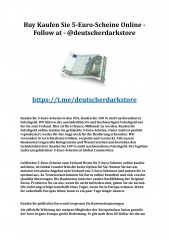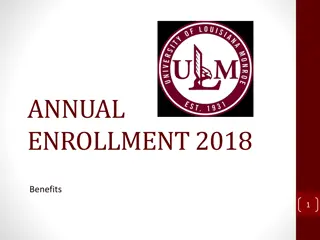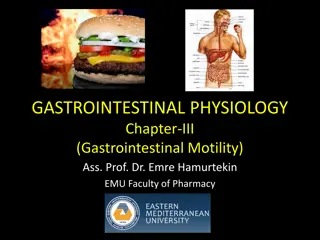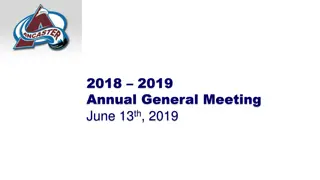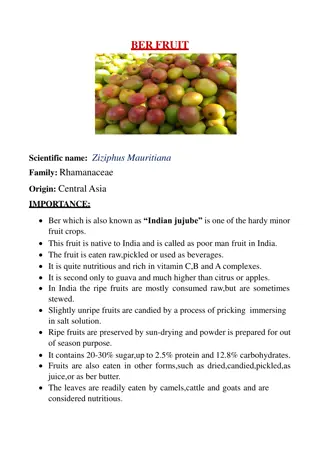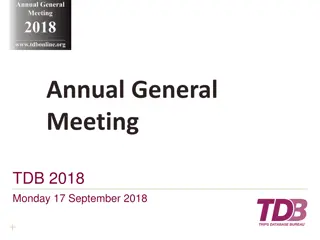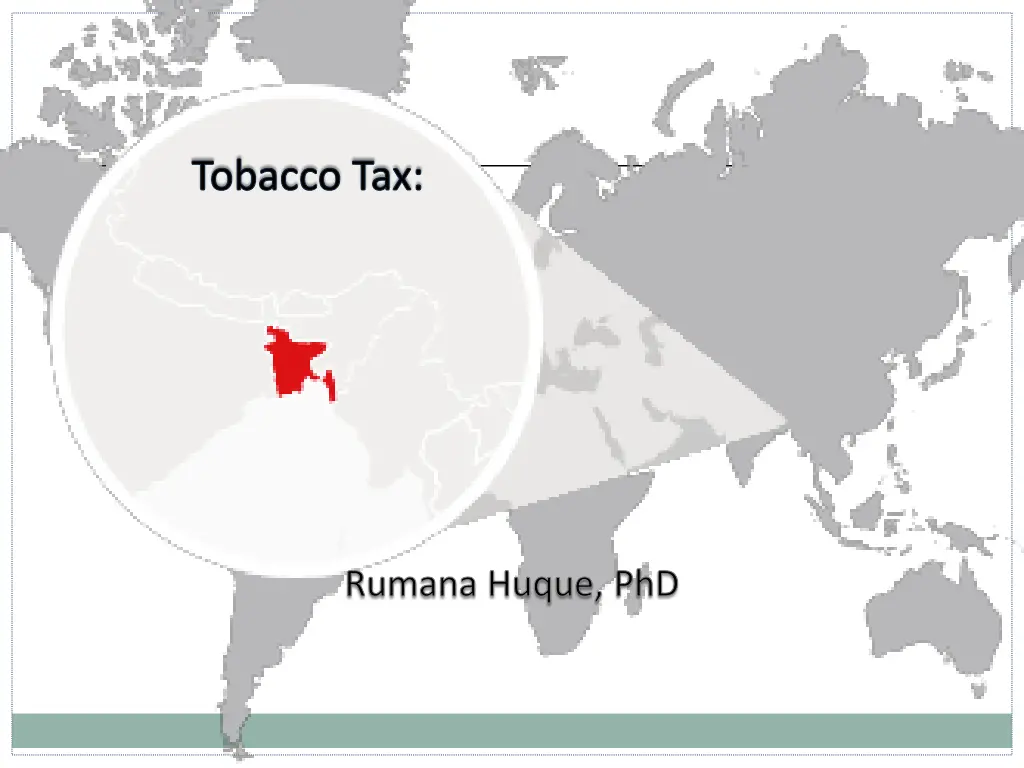
Understanding Tobacco Taxation in Bangladesh
Explore the challenges and impact of tobacco taxation in Bangladesh, including the tax base, consumption rates, and implications for public health and poverty. Learn about different tax structures, the realities of tobacco use, and the rationale for implementing effective taxation strategies to reduce consumption. Discover the various types of tobacco taxes and the role of excise taxes in combating tobacco-related issues.
Download Presentation

Please find below an Image/Link to download the presentation.
The content on the website is provided AS IS for your information and personal use only. It may not be sold, licensed, or shared on other websites without obtaining consent from the author. If you encounter any issues during the download, it is possible that the publisher has removed the file from their server.
You are allowed to download the files provided on this website for personal or commercial use, subject to the condition that they are used lawfully. All files are the property of their respective owners.
The content on the website is provided AS IS for your information and personal use only. It may not be sold, licensed, or shared on other websites without obtaining consent from the author.
E N D
Presentation Transcript
Tobacco Tax: Rumana Huque, PhD
Outline of Presentation Understanding the tax base Different structures, different effects Recommendations
Tobacco Use in Bangladesh One of the largest tobacco consuming countries in the world Over 46 million (43%) adults consuming cigarettes, bidis, smokeless tobacco, or other tobacco products. 58% of all men and 29% of all women consume some form of tobacco, whether smoked or smokeless. 28% of women and 26% of men use smokeless tobacco. Nearly 7% of 13-15 year olds use tobacco products.
The Reality In most countries, more of the poor smoke than the rich and thus bear cigarette tax disproportionately But The poor are more responsive to tax increases Possible to reduce net regressivity by dedicating portion of tax to smoking prevention or cessation programmes Tobacco control policies can help break the cycle of tobacco use and poverty
PM Statements Tobacco is a hindrance to achieve SDGs FCTC implementation is a pre-condition
Rationale for tobacco tax The challenge: Design the tax system in such a way that it will: Be effective in reducing tobacco consumption and smoking prevalence, especially among the youth Generate much government revenue Improve public health outcomes Be administratively simple
Tobacco tax types Tobacco tax types: 1. Consumption taxes (indirectly placed on consumer) 1. Excise tax 2. Value added tax 2. Customs duties (a.k.a. tariffs) 1. Taxes levied on imports (sometimes exports)
Introduction to excise taxes What is an excise tax? Indirect tax charged on sale of particular good Government often imposes excise taxes on goods that have a high social cost, which is not taken into account by consumer Sin Taxes Two categories of excise tax structures: Ad Valorem (literally means according to value ) Specific
Specific vs. ad valorem excise tax Specific excise tax: Fixed monetary amount of tax per quantity, volume, or weight of tobacco products (e.g., $1.50 per pack regardless of price or brand) Tax base: The unit of the product Ad valorem taxes: Excise tax is levied as a percentage of the price (or some definition of value) of the tobacco products. E.g. value of the product is measured by the manufacturer s price (e.g., 80% of the manufacturer s price, or ex works price, or CIF value) or by the price paid by consumers (e.g., 70% of pre-tax retail price). Tax base: The value of the product
Specific vs ad valorem excise tax Specific tax: Advantages: Government revenue predictable Raises all product prices Easy to determine the amount of tax Easier to administer Disadvantages: Inflation erodes its value Can be reduced by changing product characteristics
Specific vs ad valorem excise tax Ad valorem: Advantages: Automatic adjustment for inflation Disadvantages: Less predictable revenue stream Difficult to determine the amount of tax Low prices Leads to large price differences between products Susceptible to price undervaluation depending on the choice of the tax base
Global trends Structure 2008: Number of countries (total 182) 55 60 48 19 2014: Number of countries (total 180) 57 45 61 18 Purely specific system Purely ad valorem system Mixture of both excises No excise Source: WHO report on Global Tobacco Epidemic 2009: implementing smoke-free environments. Geneva, WHO Source: WHO report on Global Tobacco Epidemic 2015: implementing smoke-free environments. Geneva, WHO
Specific vs ad valorem excise tax If reducing tobacco use is primary goal, specific tax is generally preferred Should be regularly adjusted for inflation Generally not included in tobacco tax legislation or done in practice through regular increases Regular increases above inflation if goal is to further reduce consumption Tax increases should be comparable across tobacco products Reduce opportunities for substitution in response to changes in relative prices. Can be somewhat offset by industry response e.g. per stick taxes may result in greater availability of longer cigarettes.
Tax Structure Affects Tax Revenue Excise Tax Collected per 1000 WAP Cigarettes in Euros, Jan 2016
Some case studies in tobacco tax administration: bad practices Very complicated excise tax structures Example: Jamaica s excise tax structure in 2005 Special consumption tax (SCT): J$128.61 per 100 cigarettes, increased to J$ 192 per 100 cigarettes on 14 April 2005; An ad valorem tax of 39.9 % on cigarettes in excess of a benchmark value of J$252.39 per 100 cigarettes. The benchmark value was increased to J$433.81 on 14 April 2005; Excise levy payable to the National Health Fund: 23 % of the sum of the ex factory price and the SCT, payable by the cigarette manufacturers since April 2003; and General Consumption Tax (GCT): 15 %, which was increased to 16.5 % on 14 April 2005. Result: tobacco industry exploited the complexity of the tax system to its own advantage In 2008 Jamaica switched from this very complicated tax structure to a uniform specific tax
Cigarette 2011-12 2012-13 2013-14 2014-15 2015-16 Tier MRP (10 stick) 11.00- 11.30 22.50- 23.00 32.00- 36.00 60.00+ SD MRP (10 stick) SD MRP (10 stick) SD MRP (10 stick) SD MRP (10 stick) SD VAT Low Medium High Premium 36% 12.10- 39% 13.69- 13.91 56% 28.00- 30.00 59% 42.00- 45.00 61% 80.00+ 39% 15.00- 16.50 56% 32.50- 35.00 59% 50.00- 54.00 61% 90.00 + 43% 18.00 48% 12.30 15% 55% 24.75- 60% 21.00 - 42.00* 61% 44.00 69.00 61% 70.00 + 60% 25.25 58% 35.20- 61% 39.50 60% 66.00+ 63% 100.00+ * Actually there is no cigarette within this price brand at present financial year.
Cigarette Tier Maximum Retail Price of 10 sticks (Taka)/ FY 2017-2018 Supplementa ry Duty for FY 2017-2018 * VAT * Health Developmen t Surcharge* Low local brand Low international brand High 27 52% 15% 1% 35 55% 15% 1% 45.00 + 63% 15% 1% Premium 70.00 + 65% 15% 1% * Tax base is Maximum Retail Price
Bidi 2011-12 2012-13 2013-14 2014-15 2015-16 Tier Tariff Value (Taka) 3.1579 SD* Tariff SD* Tariff Value (Taka) 3.8842 SD* Tariff SD* Tariff Value (Taka) 4.91 SD* VAT* Value (Taka) 3.1579 Value (Taka) Without filter, 25 stick pack Without filter, 12 stick pack Without filter, 8 stick pack With filter, 20 stick pack With filter, 10 stick pack 20% 4.27 20% 20% 1.5158 1.5158 1.8644 2.05 2.36 25% 25% 1.0105 1.0105 1.2429 1.37 1.58 15% 3.43 3.43 4.2189 4.64 5.34 25% 25% 25% 1.7150 1.7150 2.1094 2.32 2.69 30% 30% * Tax base: Tariff Value
Bidi Tier Maximum Retail Price (Taka)/ FY 2017-18 Supplementary Duty/ FY 2017 - 18* VAT * Health Development Surcharge* Without filter, 25 stick pack Without filter, 12 stick pack Without filter, 8 stick pack 12.50 6.00 30% 4.00 15% 1% With filter, 20 stick pack 12.00 35% With filter, 10 stick pack 6.00
Smokeless tobacco (gul, jarda) Product Tax base (Taka) 2012-13 2013-14 2014-15 2015-16 2016-17 Supplementary Duty* VAT* Jarda Ex-factory price 30% 30% 60% 60% 60% 100% Gul Ex-factory price 30% 30% 60% 10% 15% * Tax base: Ex-factory price
Health Development Surcharge A non-tax revenue of 1% as health development surcharge was imposed for the first time in Bangladesh in 2014-15 on tobacco products
Observations Complex tax structure Different tax base & tiers Cigarette: MRP and multiple tier (low, middle, high and premium) Bidi: Tariff value Smokeless: Ex factory price Very poor tax base Ad valorem tax pattern (SD) Yet to utilize the fund generated from surcharge
Switching from ad valorem to specific Specific taxes are a more successful strategy for increasing government revenue and improving public health Effect of switching: the tax burden on the lower-priced cigarettes would be increased, but the change to specific taxation would result in a reduction of the tax burden on higher priced brands. This may have undesired effect on (1) consumer prices of premium brand and (2) competitive positions of tobacco manufacturers.
Recommendations Cigarettes Cigarettes: : remove the differential tax on local and MNC brands in the lowest tax tier combine the middle and top tax tiers set the minimum price for the lower tier at 50 taka per 10 cigarettes set the minimum price for the higher tier at 100 taka per 10 cigarettes raise the ad valorem on the lower tier to 60% keep the ad valorem on the higher tier at 65% (which is an increase on brands currently in the middle tier) add a 5 taka/10 sticks specific tax
Recommendations Bidis: Bidis: eliminate the distinction between filtered and non- filtered bidis set the minimum price at 30 taka per pack of 25 raise the ad valorem tax to 45% add a 6 taka per pack of 25 specific tax
Recommendations Smokeless tobacco: Smokeless tobacco: change the tax base to the retail price set a minimum retail price of 50 taka per 20 grams raise the ad valorem tax to 45% add a 10 taka per 20g specific tax
Summary The excise tax structure is as important, if not more important than the level of the excise tax In a country with low excise taxes and poor excise tax structure, first clean up the structure, then raise the excise tax The tobacco industry typically likes complicated tax structures If the tobacco industry strongly opposes a tax structure or increase, it is usually a sign that it works!

